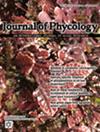Raphidiopsis raciborskii种内多样性:其入侵成功的关键
IF 3.4
3区 生物学
Q1 MARINE & FRESHWATER BIOLOGY
引用次数: 0
摘要
本文章由计算机程序翻译,如有差异,请以英文原文为准。
Intraspecific diversity in Raphidiopsis raciborskii: A key to its invasive success
求助全文
通过发布文献求助,成功后即可免费获取论文全文。
去求助
来源期刊

Journal of Phycology
生物-海洋与淡水生物学
CiteScore
6.50
自引率
3.40%
发文量
69
审稿时长
2 months
期刊介绍:
The Journal of Phycology was founded in 1965 by the Phycological Society of America. All aspects of basic and applied research on algae are included to provide a common medium for the ecologist, physiologist, cell biologist, molecular biologist, morphologist, oceanographer, taxonomist, geneticist, and biochemist. The Journal also welcomes research that emphasizes algal interactions with other organisms and the roles of algae as components of natural ecosystems.
All aspects of basic and applied research on algae are included to provide a common medium for the ecologist, physiologist, cell biologist, molecular biologist, morphologist, oceanographer, acquaculturist, systematist, geneticist, and biochemist. The Journal also welcomes research that emphasizes algal interactions with other organisms and the roles of algae as components of natural ecosystems.
 求助内容:
求助内容: 应助结果提醒方式:
应助结果提醒方式:


